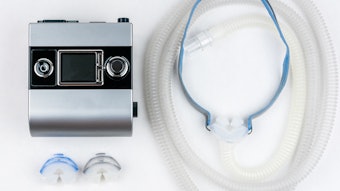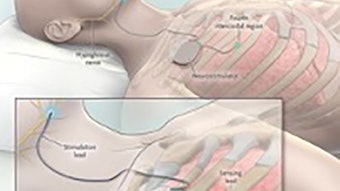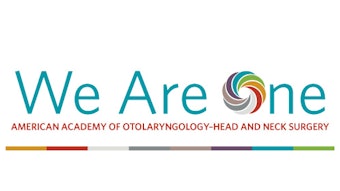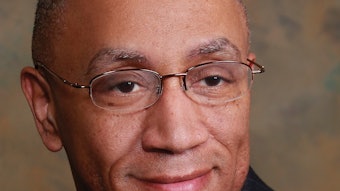Emerging Data Support a Personalized Approach for Elderly Patients with Head and Neck Cancer
Head and neck surgeons are increasingly concerned about following best practices when caring for elderly individuals with head and neck cancer. At the AAO-HNSF 2019 Annual Meeting & OTO Experience, this topic organically arose during three separate oncologic committee meetings.
Nicole C. Schmitt, MD, and Sidharth V. Puram, MD, PhD
Head and neck surgeons are increasingly concerned about following best practices when caring for elderly individuals with head and neck cancer. At the AAO-HNSF 2019 Annual Meeting & OTO Experience, this topic organically arose during three separate oncologic committee meetings. As life expectancy and the median age of the population continue to rise, otolaryngologists will increasingly encounter geriatric head and neck cancer patients. Surgeons and oncologists may be reluctant to offer curative therapy to these patients based on concerns about increased morbidity and mortality versus younger cancer patients. However, multiple studies demonstrate improved outcomes and reduced cost when elderly head and neck cancer patients are treated according to National Comprehensive Cancer Network (NCCN) Guidelines.1-4 Ironically, the clinical trials on which the NCCN Guidelines are based have included very few geriatric patients.5,6 Thus, treatment recommendations must often be modified to accommodate elderly patients and their unique medical and personal considerations.
While it may coincide with advanced chronological age and comorbidities, frailty is a distinct condition consisting of physiologic decline and medical vulnerability. Frailty—more so than age, performance status, and comorbidity indices—has been linked to poor health outcomes and mortality in cancer patients.7,8 A comprehensive geriatric assessment (CGA) has been recommended for identification of frail patients who are most in need of treatment modifications, but geriatric assessment scales have not yet been widely used in clinical oncology practices.6,7
Among the geriatric population, distinct challenges arise when considering options for surgical management of oncologic diagnoses. On the most basic level, elderly individuals have physiologic changes in their connective tissue, with loss or replacement of elastin and collagen, which likely impairs healing. These features place patients at greater risk for complications such as wound breakdown, fistula, or dehiscence. Among these individuals, the vigor of immune response may also be blunted, adding further susceptibility to surgical site infection and its complications. Because the geriatric cohort will generally have more medical comorbidities than other groups, they will also be less likely to cope with such complications while being at greater risk for perioperative mortality and medical complications (e.g., respiratory failure).9,10 This higher risk of complications should be carefully explained when counseling patients on surgery, with the important caveat that elderly patients in good health and favorable performance status (i.e., fit) can have optimal oncologic outcomes.6,11 Certainly, involvement of the geriatric consult service as well as the patient’s primary physician represents a best practice that facilitates a tailored, individualized approach.12
When considering oncologic ablation in the geriatric population, curative intent surgery demands a nearly identical procedure to younger individuals; however, reconstruction can be more nuanced. Indeed, a study of the American College of Surgeons National Surgical Quality Improvement Program (ACS NSQIP) dataset explored free and regional pedicled flap reconstruction in patients with varying degrees of frailty.13 Modified frailty index was predictive of Clavin-Dindo classification IV complications, specifically in free flaps but not regional flaps. Similarly, retrospective studies have suggested that free flaps in octogenarians may result in longer ICU stays and complications, although flap failure and overall length of stay may be similar.14 Importantly, the 30-day mortality rate was significantly higher in the octogenarian cohort; however, this study did not adjust for comorbidities or pathology. Nevertheless, regional flaps such as the supraclavicular island, pectoralis major, and submental flap should at least be considered in the geriatric population. With that said, free flaps can be utilized with careful patient selection: When these procedures are successfully completed in the elderly, quality of life measures appear to be similarly rated,15 higher-quality care may reduce costs,1,2 donor site morbidity may be comparable to younger patients,16 and functional outcomes such as swallow may be achievable.17 Thus, all rungs of the reconstructive ladder should be thoughtfully considered to determine what options may be best for a given patient. Indeed, a rigid refusal to consider surgery, or reconstruction for that matter, in elderly individuals purely based on age appears to be comprehensively rejected by these prior studies.
For geriatric patients whose treatment plan includes primary or adjuvant radiation or chemoradiation, additional challenges are encountered. Patients with limited mobility must often rely on younger family members to transport them to radiation appointments over several weeks, which can become a logistic hardship for the entire family. Elderly patients are also particularly susceptible to adverse effects of chemotherapy and radiation.18 Swallowing may already be impaired by the aging process, and elderly patients are less able to tolerate aspiration. Many patients with advanced-age renal insufficiency or hearing loss may be offered radiation alone or with cetuximab, with the possibility of decreased efficacy versus platinum-based regimens. Of further concern, adding chemotherapy to radiation, or adding any adjuvant therapy after surgery, may have a less-pronounced or negligible survival benefit in elderly patients.11,19 Despite these limitations, multiple studies have demonstrated the feasibility of curative intent radiation or chemoradiation in elderly patients who are not frail, with favorable rates of locoregional control.18-22 Elderly patients should be counseled to expect higher rates of toxicity and, often, the need for a gastrostomy feeding tube.18
Immunotherapy in the form of anti-PD-1 immune checkpoint blockade (ICB) has been FDA-approved for recurrent or metastatic head and neck cancer since 2016. Unlike systemic chemotherapy, anti-PD-1 ICB is usually well tolerated, even by elderly patients, with nearly half of treated patients demonstrating long-lasting responses or periods of stable disease.23
Patients with advanced age or medical frailty with limited life expectancy may opt to forgo curative intent treatment in favor of palliative care upon diagnosis. When instituted early in appropriate patients, supportive care may lead to improved survival in addition to enhanced quality of life.6
In conclusion, treatment of elderly patients with head and neck cancer requires a personalized approach. Medical comorbidities, frailty, life expectancy, quality of life, and support systems should be considered for each individual patient. When feasible, geriatric physicians should be integrated into multidisciplinary head and neck cancer teams, and clinical trials should be designed specifically for elderly patients. Moving forward, increasing data on outcomes of geriatric head and neck cancer patients will enhance our confidence in counseling these patients to empower them to make personalized treatment decisions.
References
- Gourin CG, Starmer HM, Herbert RJ, et al. Quality of care and short- and long-term outcomes of laryngeal cancer care in the elderly. Laryngoscope. 2015;125:2323-2329.
- Gourin CG, Herbert RJ, Quon H, et al. Quality of care and short and long-term outcomes of oropharyngeal cancer care in the elderly. Head Neck. 2019;41:3542-3550.
- Hosokawa S, Takahashi G, Okamura J, et al. Management of elderly patients with head and neck carcinoma: analysis of outcomes for radical versus palliative treatment. Int J Clin Oncol. 2020;25:432-438. doi:10.1007/s10147-019-01531-w
- Jang IJH, Skanthakumar T, Tan HK, et al. Elderly patients with advanced head and neck carcinoma: does aggressive treatment result in better outcomes? Otolaryngol Head Neck Surg. 2019;160:642-650.
- Guigay J, Le Caer H, Ortholan C, et al. Treatment of inoperable elderly head and neck cancer patients. Curr Opin Oncol. 2019;31:152-159.
- Mady LJ, Nilsen ML, Johnson JT. Head and neck cancer in the elderly: frailty, shared decisions, and avoidance of low value care. Clin Geriatr Med. 2018;34:233-244.
- Ørum M, Gregersen M, Jensen K, et al. Frailty status but not age predicts complications in elderly cancer patients: a follow-up study. Acta Oncol. 2018;57:1458-1466.
- Xue QL. The frailty syndrome: Definition and natural history. Clin Geriatr Med. 2011;27:1-15.
- Cramer JD, Patel UA, Samant S, et al. Postoperative complications in elderly patients undergoing head and neck surgery: opportunities for quality improvement. Otolaryngol Head Neck Surg. 2016;154:518-526.
- Jackson RS, Chen S, Last A, et al. Multi-institutional analysis of outcomes following transoral surgery for HPV-positive oropharyngeal squamous cell carcinoma in elderly patients. Head Neck. 2019;41:3933-3939.
- Chen JJ, Shah JL, Harris JP, et al. Clinical outcomes in elderly patients treated for oral cavity squamous cell carcinoma. Int J Radiat Oncol Biol Phys. 2017;98:775-783.
- Gambotti L, Schwob E, Schouman T, et al. Are elderly patients presenting with squamous cell carcinoma of the oral cavity given the appropriate treatment? Surg Oncol. 2018;27:715-721.
- Abt NB, Xie Y, Puram SV, et al. Frailty index: intensive care unit complications in head and neck oncologic regional and free flap reconstruction. Head Neck. 2017;39:1578-1585.
- Bhama PK, Patel SA, Khan U, et al. Head and neck free flap reconstruction in patients older than 80 years. J Reconstr Microsurg. 2014;30:523-530.
- Ferri A, Segna E, Varazzani A, et al. Free flap head and neck reconstruction in the elderly: what is the impact on quality of life? Acta Otorhinolaryngol Ital. 2019;39:145-149.
- Sugiura Y, Sarukawa S, Hayasaka J, et al. Mandibular reconstruction with free fibula flaps in the elderly: a retrospective evaluation. Int J Oral Maxillofac Surg. 2018;47:983-989.
- Worley ML, Graboyes EM, Blair J, et al. Swallowing outcomes in elderly patients following microvascular reconstruction of the head and neck. Otolaryngol Head Neck Surg. 20018;159:320-327.
- Hanasoge S, Magliocca KR, Switchenko JM, et al. Clinical outcomes in elderly patients with human papillomavirus-positive squamous cell carcinoma treated with definitive chemoradiation therapy. Head Neck. 2016;38:846-851.
- Amini A, Jones BL, McDermott JD, et al. Survival outcomes with concurrent chemoradiation for elderly patients with locally advanced head and neck cancer according to the National Cancer Data Base. Cancer. 2016;122:1533-1543.
- Haehl E, Ruhle A, David H, et al. Radiotherapy for geriatric head-and-neck cancer patients: what is the value of standard treatment in the elderly? Radiat Oncol. 2020;15:31.
- Horsley PJ, Perera L, Veness MJ, et al. Outcomes for elderly patients 75 years and older treated with curative intent radiotherapy for mucosal squamous cell carcinoma of the head and neck. Head Neck. 2020;42:25-32.
- Ward MC, Reddy CA, Adelstein DJ, et al. Use of systemic therapy with definitive radiotherapy for elderly patients with head and neck cancer: a National Cancer Data Base analysis. Cancer. 2016;122:3472-3483.
- Szturz P, Bossi P, Vermorken J. Systemic treatment in elderly head and neck cancer patients: recommendations for clinical practice. Curr Opin Otolaryngol Head Neck Surg. 2019;27:142-150.















